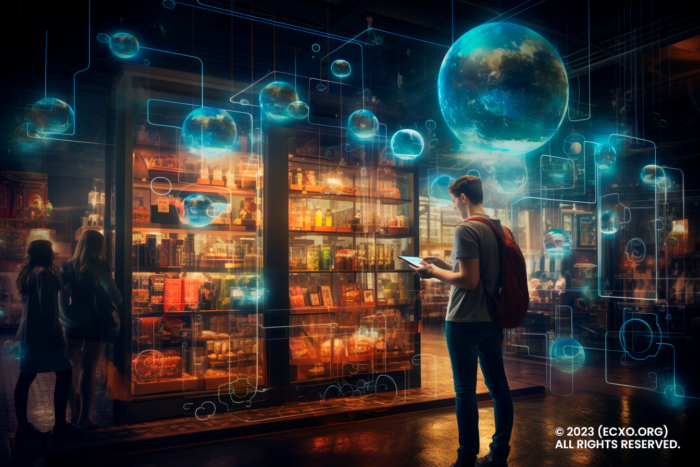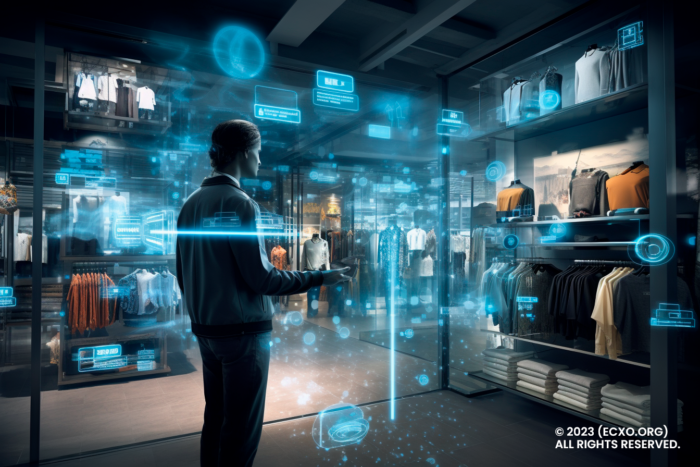
Original article: https://www.eglobalis.com/anywhere-everywhere-all-at-once-integrating-technology-in-b2b-omnichannel-design/
Anywhere, everywhere, all at once – integrating technology in B2B omnichannel design
Integrating touchpoint technologies is a strategic imperative as we all know to create the types of omnichannel experiences that business buyers experience when they purchase something from a consumer brand. B2B has been paying attention. But they’ve traditionally pieced together solutions, finding workarounds to offer an omnichannel-light experience.
Investment in technology has been targeted at one or two channels. Enhancements like adding a chatbot to a website or better payment processing via an app. Some mindsets will need to shift. You’ll need buy-in from the top. These aren’t IT projects, they’re business strategies to drive customer-led growth.
In this article, I explore how B2B businesses are integrating various channel and touchpoint technologies to create a consistent, frictionless customer experience. At the last count, there were 10 channels, including websites, apps, B2B marketplaces and social media, as well as relatively newer touchpoints like smart devices, augmented reality / virtual reality and IoT. Integrating technology gives you a broader reach, quality data (in real time) and deeper insights to drive CX and business improvements.
This year’s B2B Pulse survey from McKinsey gives us strong insights on how leaders providing the best omnichannel are driving wave after wave of growth. They typically report growth of 10% + (annually) through a differentiated omnichannel strategy. What makes these leaders different?
What’s different about omnichannel winners?
If you’ve already read the McKinsey report, you’ll know that buyers have settled into an even pattern of channel preference. There is of course nuance. However, a ‘rule of thirds’ – traditional sales, remote, self-serve – now applies to every sector. There are no exceptions to the rule.
McKinsey discovered that companies in this growth bracket simultaneously deployed five specific omnichannel strategies:
-
Hybrid sales teams and capabilities
Highly personalised marketing
Advanced sales technology usage
Third-party marketplace strategies
eCommerce excellence in owned platforms
Let’s explore some of the ways leaders integrate technology to inform your omnichannel design.
Omnichannel design – four ways leaders integrate technology

Exceptional, frictional omnichannel experiences are supported by integrated technologies. Leaders offer customers the same consumer-like experiences that they see in their personal lives – anywhere, everywhere. They’re using AI and automation to solve the complexities of B2B buying. Back-end systems like inventory management and order fulfillment are connected to the front-end view used by sales and customer service representatives. These teams have connected, real-time data at their fingertips to make recomendations, upsell, cross-sell and support customers – where they are. And as earlier discussed, better data gives deeper insights to drive CX improvements and unlock business value.
Hyper personalisation – investing in advanced technology stacks, analytics, and prescriptive insights

Businesses delivering the gold standard in omnichannel experience are thinking beyond personalisation and account-based marketing. They’re focussing on using customer data, analytics, AI and automation to deliver hyperpersonalised experiences. Experiences reflective of past interactions, and rooted in future relevance, across all touchpoints. This was one of the headline findings from McKinsey.
Martech solutions can be transformative here
While companies engage over multiple channels they are often unable to meaningfully connect those interactions into a unified, cohesive experience, or personalise at an individual level – in real time. Look for a platform that enables you to deliver tailored and targeted omnichannel experiences using data, analytics, AI, and automation.
Let me give you two examples.
SAS 360 Engage – from a single omnichannel marketing hub, marketers can deliver personalised, targeted offers across channels and devices. Teams can automate and track activities. Embedded AI and machine learning techniques provide deeper insights into customers and segments to drive retention and cross-sell / upsell strategies.
Adobe Campaign – marketers using Adobe Campaign are also able to turn their omnichannel experience into a single CX. Online and offline channels are in sync, data is unified and teams are able to ‘deliver relevant content and customised messages ‘to all the paths your customers may take — on any channel’.
Adopting advanced sales technology
There is a relentless focus among leaders to adopt new sales technology to enhance the omnichannel experience. McKinsey found that 59% of B2B firms in the 10% + growth bracket, in the past year, simultaneously introduced new sales technologies. Chatbots are becoming a staple in the technology stack. But, here’s the thing. Increasing web engagment and conversions is still the main use case in B2B. Businesses that offer a chatbot on their website or app are multichannel. And different bots might be deployed on different channels. Omnichannel leaders are using the same bot, deployed across all channels, that have access to a centralised database to serve customers, drive leads and conversions.
One for the future – 3D data visualisation
Augmented reality (AR) and virtual reality (VR) have the potential to be a powerful sales and engagement tool in B2B. Bringing data to life with data visualisation is a good use case example. Application is very early. But, there is significant potential in using the technology to present your value proposition, especially if it involves complex data that’s hard to visualise. Here’s one example. Using IBM Immersive Insights, real-time data streams to the headset and is displayed in 3D, it’s fully manipulable and scalable. Alfredo Ruiz, senior UX designer at Amazon believes that AR, VR and 3D visualisation is ‘… our way to begin exploring, creating and refining the next generation of enterprise applications for data analysis’.
eCommerce platforms
eCommerce is becoming a key battleground that separates the leaders from the laggards. Respondents in the McKinsey survey saw eCommerce as the most effective sales channel. In fact, 35% of B2B decision-makers prefer buying online and companies are winning market share by enabling their customers to buy through multiple channels. (In-person is in second spot at 26%). Almost half of winners (48%) are on industry-specific marketplaces, complementing their own self-serve options.
As always, there are many eCommerce platforms competing for your business. Take Salesforce Commerce Cloud, for example. Simple, self-service buying options on any channel, any device create a frictionless consumer-like experience. Recommendations are tailored in real time. Users have a 360-degree view of customers and respond in real-time acroos all touchpoints. B2B buying complexities are eliminated – fast reorders, account hierarchies, contract pricing, custom catalogues make the buying experience simpler, and faster.
An omnichannel agent experience
As mentioned earlier, customer service and sales representatives need access to unified data to provide a consistent omnichannel experience. Zurich Insurance, which also serves SMEs, large companies and multinationals, has solved this by building an omnichannel experience for its agents (in partnership with OutSystems). Agents use a dedicated platform (online portal + iOS and Android app for tablets and smartphones). They have access to connected customer data and their histories at their fingertips. They also have acces to regulatory and policy information to provide consistent and accurate information.
To conclude
Investing in touchpoint technology in critical to offer business customers the consumer-like omnichannel experiences they see in their personal lives. Buyers criss-cross channels as they move up, down and sideways along their journey. Leaders delivering the best omnichannel experience meet their customers where they are.
They are simultaneously focussed on creating value through hyper personalisation, they’re adopting advanced sales technologies, investing in eCommerce platforms and building omnichannel agent experiences. Customer data is unified and centralised to serve customers in the moment. Enriched data, analytics, AI and automation give stakeholders deeper insights to make data-driven decisions about how to improve CX and deliver business value.



